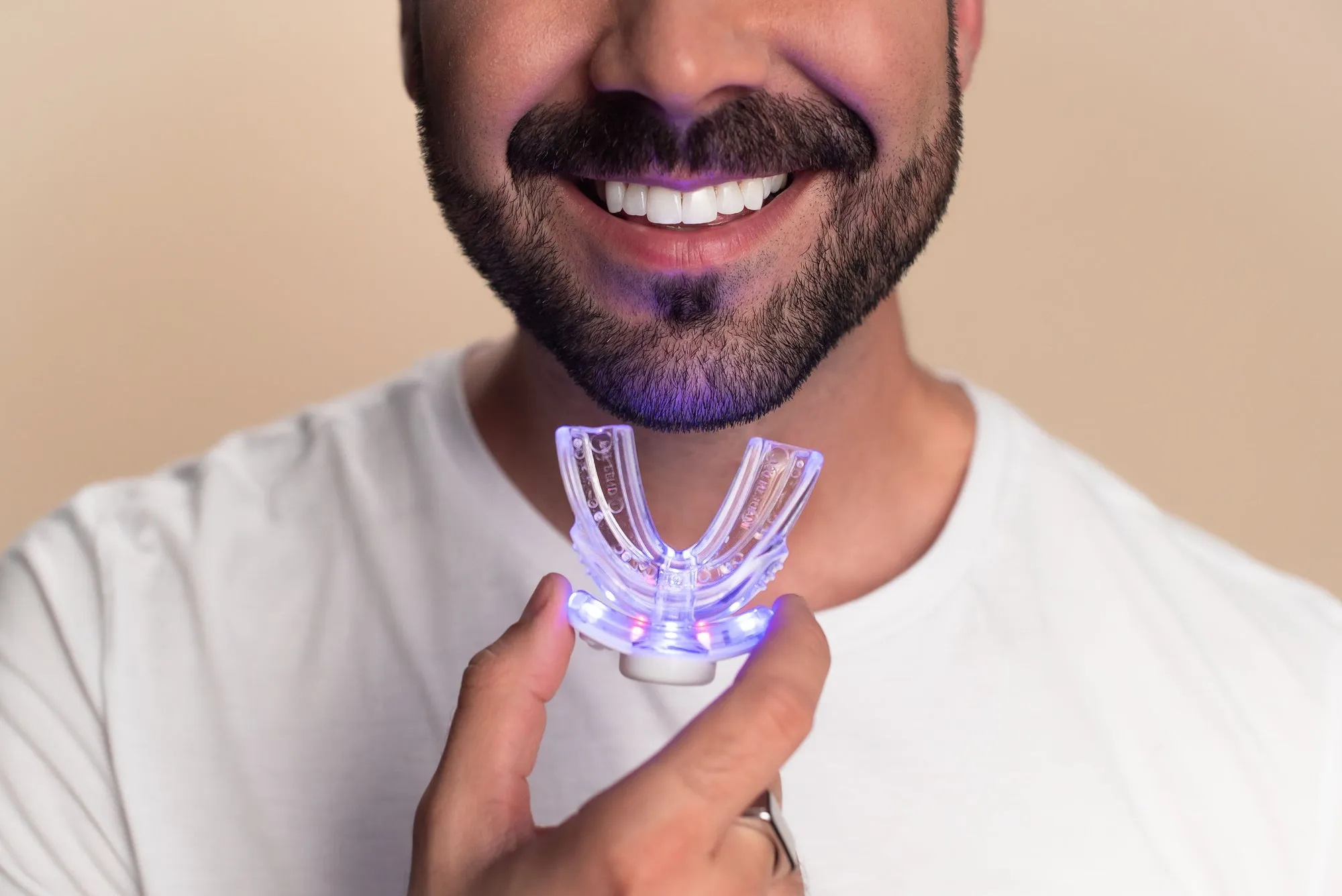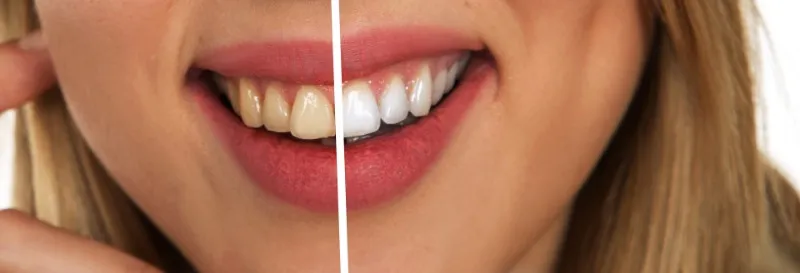Teeth Whitening Side Effects on Gums Overview
Teeth whitening has surged in popularity as a cosmetic procedure to enhance smiles. However, it’s crucial to be aware of the potential side effects, especially those affecting your gums. While the desire for a brighter smile is understandable, understanding the risks can help you make informed decisions and take proactive steps to protect your oral health. This article explores the top five risks associated with teeth whitening and provides insights on how to mitigate these issues. Prioritizing your gum health alongside your aesthetic goals ensures a safe and satisfying teeth whitening experience. Consulting with a dental professional before beginning any whitening treatment is always recommended to personalize the approach based on your unique needs.
Sensitivity of Gums & Teeth
Sensitivity is a common and often temporary side effect of teeth whitening. Many individuals experience heightened sensitivity in their teeth and gums during and immediately after the whitening process. This sensitivity can range from mild discomfort to sharp, shooting pains, especially when consuming hot, cold, sweet, or acidic foods and drinks. The intensity of the sensitivity varies from person to person and depends on factors such as the concentration of the whitening agent, the duration of the treatment, and the individual’s existing oral health. If you’re prone to sensitivity, it’s important to discuss this with your dentist before undergoing teeth whitening.
Understanding the Causes of Sensitivity

Sensitivity arises primarily due to the action of the whitening agents, typically hydrogen peroxide or carbamide peroxide. These chemicals penetrate the enamel to reach the dentin, the layer beneath the enamel that contains the tubules connected to the nerves of the teeth. As the whitening agents break down the stains, they can also irritate the nerves, causing sensitivity. Additionally, if the gums are not properly protected, the whitening agent may come into direct contact with the gum tissue, causing inflammation and sensitivity. Pre-existing conditions, such as receding gums or enamel erosion, can also make teeth more vulnerable to sensitivity during the whitening process. The use of high-concentration whitening products can exacerbate these effects, highlighting the importance of professional guidance.
Managing Sensitivity Tips and Treatments
Fortunately, sensitivity is usually temporary and manageable. Several strategies can help alleviate discomfort. Using toothpaste specifically designed for sensitive teeth, which contains ingredients like potassium nitrate, can help block the nerve signals that cause pain. Avoiding extremely hot or cold foods and drinks can also minimize sensitivity. Over-the-counter pain relievers, such as ibuprofen or acetaminophen, can provide temporary relief. Your dentist may also recommend in-office treatments, like fluoride applications, to strengthen the enamel and reduce sensitivity. If the sensitivity is severe or prolonged, it’s essential to consult your dentist to rule out any underlying dental issues and to ensure the whitening treatment is appropriate for your teeth.
Gum Irritation & Inflammation
Another common side effect of teeth whitening is gum irritation and inflammation, often referred to as gingivitis. This occurs when the whitening agent comes into contact with the gums, causing them to become red, swollen, and tender. The severity of the irritation depends on the concentration of the whitening agent, the duration of exposure, and how well the gums were protected during the whitening process. In some cases, the gums may even bleed easily when brushing or flossing. This irritation can be uncomfortable and, if left untreated, may lead to more serious gum problems.
Identifying Symptoms of Gum Irritation

The symptoms of gum irritation are usually quite noticeable. The gums may appear redder than usual, and the gum line may be swollen or puffy. You might experience tenderness or pain when brushing or flossing, and your gums may bleed easily. In more severe cases, the gums may recede slightly, exposing more of the tooth’s surface. If you notice any of these symptoms after teeth whitening, it’s crucial to address them promptly. Monitoring your oral health and being attentive to any changes in your gums is vital for early detection and intervention.
Preventing and Treating Gum Inflammation
Preventing gum irritation involves proper preparation and technique during the whitening process. If you’re undergoing professional whitening, your dentist will typically use a protective barrier to shield your gums from the whitening agent. For at-home treatments, follow the instructions carefully, ensuring the whitening trays fit properly and do not allow the gel to overflow onto your gums. Maintaining excellent oral hygiene is also crucial. Brush your teeth gently with a soft-bristled toothbrush, floss daily, and use an antiseptic mouthwash to reduce bacteria. If you experience gum irritation, rinsing your mouth with warm salt water can help soothe the inflammation. If the irritation persists or worsens, consult your dentist, who may recommend a medicated mouthwash or other treatments.
Teeth Whitening Chemicals The Risks
The active ingredients in teeth whitening products, primarily hydrogen peroxide and carbamide peroxide, are potent chemicals that can cause various side effects if not used properly. While these chemicals are effective at breaking down stains, they can also irritate the soft tissues of the mouth, including the gums. The concentration of these chemicals is a significant factor in the severity of potential side effects. Over-the-counter products typically contain lower concentrations, while professional treatments may use higher concentrations for faster results. However, the use of higher concentrations increases the risk of adverse reactions. Careful application and monitoring are essential to minimize the risks associated with these chemicals.
Hydrogen Peroxide and Carbamide Peroxide

Hydrogen peroxide is the primary bleaching agent used in many teeth whitening products. It directly oxidizes the stain molecules, breaking them down and making the teeth appear whiter. Carbamide peroxide is another commonly used agent, which breaks down into hydrogen peroxide and urea. The urea helps to buffer the hydrogen peroxide, making it less likely to cause sensitivity. The concentration of these agents varies widely. Professional treatments often use higher concentrations, which can provide quicker and more dramatic results but also increase the risk of side effects. At-home products usually have lower concentrations, making them safer but potentially less effective in a single application.
Chemical Burns How They Happen
Chemical burns from teeth whitening can occur when the whitening agent comes into direct contact with the gum tissue for an extended period. This can happen if the whitening trays don’t fit properly, allowing the gel to leak out, or if too much gel is used. The high concentration of the whitening agent can cause the gum tissue to become inflamed, white, and blistered. The severity of the burn depends on the concentration of the agent and the duration of exposure. Chemical burns can be painful and may delay the healing process of any pre-existing gum issues. Therefore, proper application techniques and the use of protective measures are critical to avoid chemical burns.
Protecting Your Gums from Chemical Burns
Preventing chemical burns requires careful application and the use of protective measures. When undergoing professional whitening, your dentist will use a rubber dam or other protective barrier to isolate your gums from the whitening agent. For at-home treatments, ensure the whitening trays fit your teeth snugly and do not overflow. Use the recommended amount of gel and avoid overfilling the trays. If you notice any gel leaking onto your gums, remove it immediately with a clean cotton swab. Avoid brushing your teeth aggressively immediately after applying the whitening agent, as this can further irritate your gums. If you experience any burning sensation, discontinue use and consult your dentist immediately.
Enamel Erosion and Damage

While less common, excessive or improper teeth whitening can lead to enamel erosion and damage. Enamel is the hard, protective outer layer of your teeth, and it’s not indestructible. Overuse of whitening products or the use of high-concentration agents can weaken the enamel, making the teeth more susceptible to decay, sensitivity, and staining. Once the enamel is damaged, it cannot be fully restored, highlighting the importance of moderation and professional guidance when whitening your teeth.
The Process of Enamel Erosion
Enamel erosion occurs when the whitening agents break down the minerals in the enamel. This can happen gradually over time with repeated treatments, or more rapidly if high-concentration agents are used frequently. The weakening of the enamel makes the teeth more porous and vulnerable to acids from foods and drinks, as well as bacteria that cause decay. The teeth may also become more sensitive due to the exposure of the dentin, which contains the nerve endings. Once the enamel is damaged, the teeth can appear duller and more susceptible to staining. This is why it’s important to follow the recommendations of your dentist and adhere to the product instructions.
Ways to Protect Your Enamel
Protecting your enamel involves several strategies. Firstly, follow your dentist’s recommendations and the product instructions carefully. Avoid overusing whitening products, and stick to the recommended frequency and duration of treatment. Use a fluoride toothpaste, which helps to remineralize the enamel and strengthen the teeth. Limit your intake of acidic foods and drinks, such as soda, citrus fruits, and fruit juices, as these can erode the enamel. If you have a history of enamel erosion, talk to your dentist about alternative whitening options or treatments to strengthen your enamel before you start any whitening procedures. Regular dental check-ups and cleanings are also essential for monitoring your enamel health.
Risk of Allergic Reactions

Although rare, allergic reactions to teeth whitening products are possible. The ingredients in whitening gels, such as hydrogen peroxide, carbamide peroxide, or other additives, can trigger an allergic response in sensitive individuals. These reactions can range from mild to severe, and it is important to be aware of the potential symptoms and to take appropriate action if you suspect an allergic reaction.
Recognizing Allergic Reactions
Allergic reactions to teeth whitening products can manifest in several ways. Common symptoms include itching, swelling, and redness of the gums or the soft tissues inside the mouth. You might experience a rash or hives around the mouth or on other parts of the body. In more severe cases, you may have difficulty breathing or swallowing. Any sign of an allergic reaction should be taken seriously. Be vigilant for any unusual symptoms after using a whitening product, and contact your dentist or seek medical attention if needed.
What to Do If You Experience a Reaction
If you suspect you’re experiencing an allergic reaction to a teeth whitening product, stop using the product immediately. Rinse your mouth thoroughly with water to remove any remaining product. Contact your dentist or seek medical attention, especially if you experience difficulty breathing or swallowing. Your dentist can assess the reaction and recommend appropriate treatment, which may include antihistamines or other medications to manage the symptoms. It’s also important to inform your dentist about the specific whitening product you were using so they can identify the potential allergen and prevent future reactions. Keep a record of the product and the date of the reaction for future reference. If you have a history of allergies, be sure to inform your dentist before starting any whitening treatments.
In conclusion, while teeth whitening can significantly enhance your smile, it is essential to be aware of the potential side effects on your gums. Understanding these risks, including sensitivity, gum irritation, chemical burns, enamel erosion, and allergic reactions, allows you to make informed decisions and take proactive steps to protect your oral health. Always consult with your dentist before starting any whitening treatment and follow their recommendations. By prioritizing your gum health and practicing good oral hygiene, you can enjoy a brighter smile without compromising your well-being.
